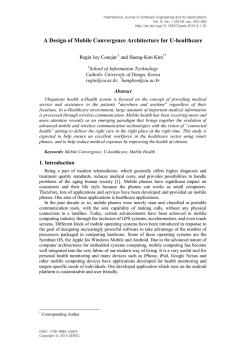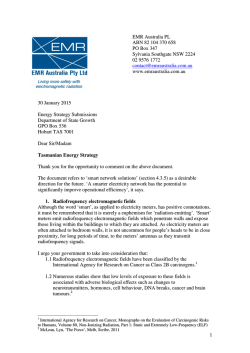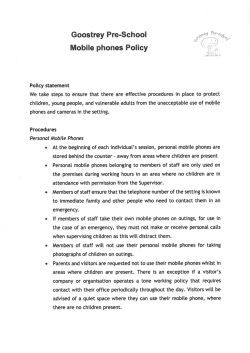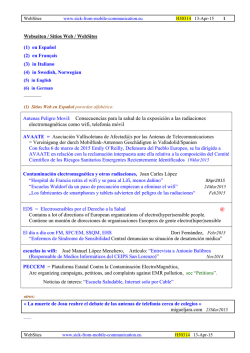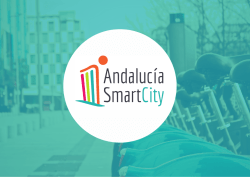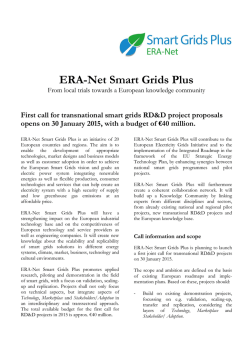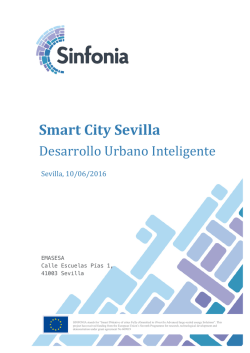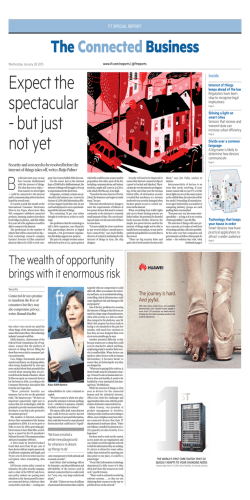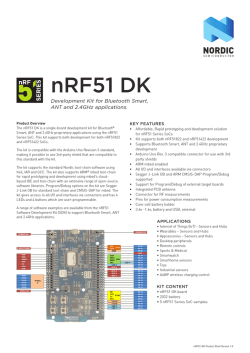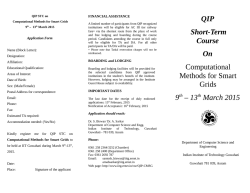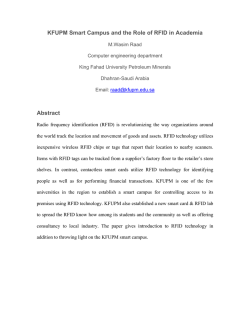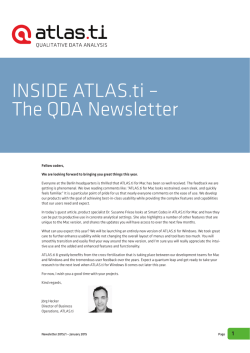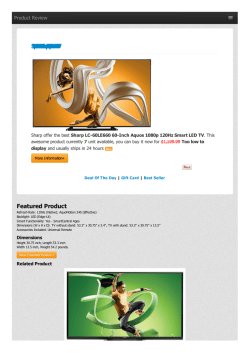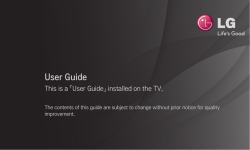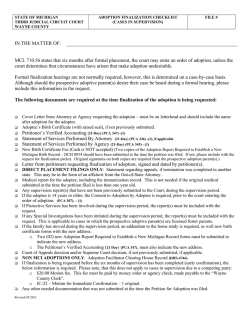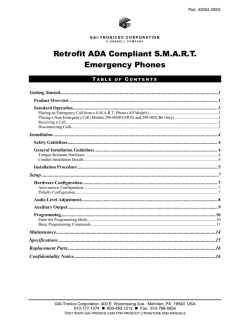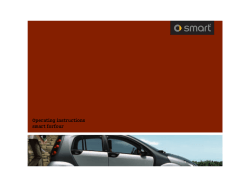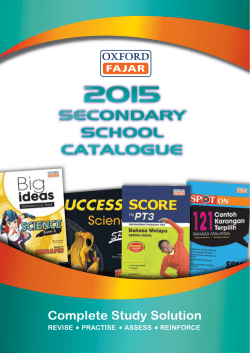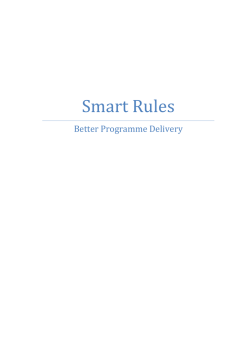
Clustering of Smartphone ownership in Development
Smartphone ownership in Asia Rich Ling IT University of Copenhagen Telenor Kenth Engø-Monsen Telenor Johannes Bjelland Telenor Pål Roe Sundsøy Telenor Geoff Canright Telenor People at the of “bottom of the of the pyramid” have more limited access to smart phones and thus to mobile internet, and apps Data Abstract We are seeing the development of a large number of applications for smart phones that focus on the needs of people in developing countries (Alam, Khanam, & Khan, 2010). These developments promise to provide users with a wide spectrum of services and functionality ranging from m-health, to agricultural information, the ability to report problems and the ability to participate in political life (Kulkarni & Agrawal, 2008). A critical issue in this situation is, however, limited access to smart-phones that can use these applications. It is not clear as to whether people in developing countries have access to these devices. We examine the adoption of smart phones among a large sample (many tens of thousands) of users in an Asian country to determine the current adoption rates. Further we examine the adoption of smart phones by use of services, location and for the 10 top links for each of these users. 1) There are many “apps for development” We examined the degree to which smart phones are used in a developing country among strong-tie clusters. The experience of adoption in developed countries shows that there are network effects when considering the diffusion of smart phones (Sundsøy et al., 2011). In developing countries, there are few smart phones. In the Scandinavian countries the adoption of smart phones (here defined as having an open OS and using GPRS), has reached approximately 60% of users. By contrast, in the poorer countries of southern Asia there are only about 3% of the users who have a smart phone. The phones that are in use are more often in the cities and among users who have the economic ability to use the device more. This has implications in relation to the functionality of apps that are, in some cases, the threshold for use of m-health services, m-agriculture and m-inclusion. This analysis will provide a baseline from which to examine the diffusion of this technology. Also it will help us to understand the potential for app adoption and use. 2) Very few Asian subscribers have a smart phone 3) Smart phone users spend more (have better economy?) 250 100% 90% 80% 200 70% 60% Entry low 50% Entry high 40% Feature phone 30% Smart phone Median ARPU Unknown 150 Urban Rural 100 Smart phone high 20% 10% 50 0% 0 Source: Telenor Smart Phone 4) People who have smart phones are more likely to have friends with smart phones Other phone 5) Urban users have more ties with other smartphone users than rural smartphone users 0.6 0.5 Friends with smart phone (10 top links) Friends with smart phone (10 top links) 0.5 0.4 0.3 0.2 0.4 0.3 Ego is urban Ego is rural 0.2 0.1 0.1 0 Smart phone 0 Source: Telenor Ego has smart phone Ego does not have smart phone Source: Telenor Other phone Type of phone owned by ego • The use of apps for development is still a revolution waiting to happen • First users will likely be representatives of institutions (health workers, government officials, etc.)
© Copyright 2026
